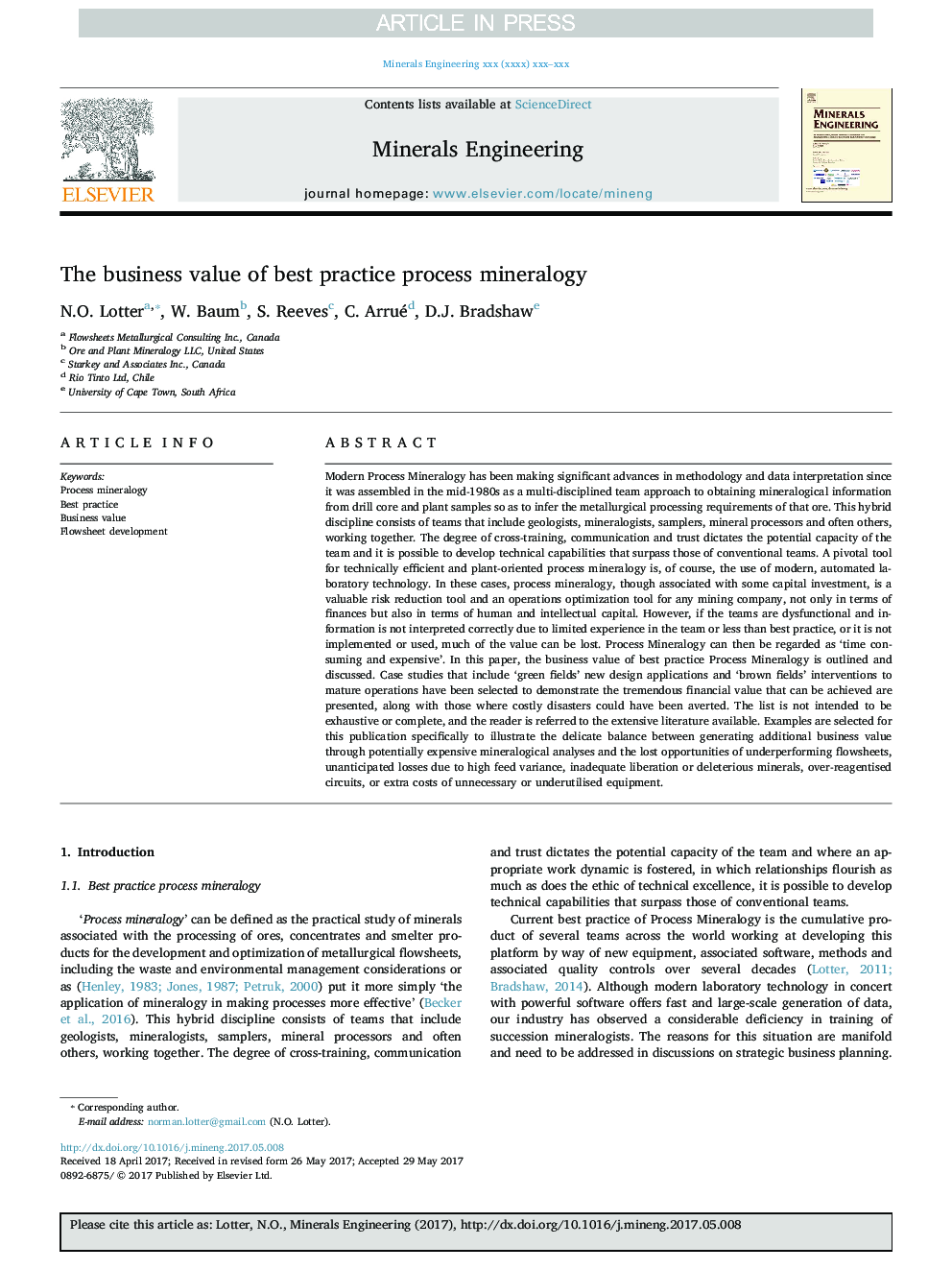| Article ID | Journal | Published Year | Pages | File Type |
|---|---|---|---|---|
| 6672676 | Minerals Engineering | 2018 | 13 Pages |
Abstract
Modern Process Mineralogy has been making significant advances in methodology and data interpretation since it was assembled in the mid-1980s as a multi-disciplined team approach to obtaining mineralogical information from drill core and plant samples so as to infer the metallurgical processing requirements of that ore. This hybrid discipline consists of teams that include geologists, mineralogists, samplers, mineral processors and often others, working together. The degree of cross-training, communication and trust dictates the potential capacity of the team and it is possible to develop technical capabilities that surpass those of conventional teams. A pivotal tool for technically efficient and plant-oriented process mineralogy is, of course, the use of modern, automated laboratory technology. In these cases, process mineralogy, though associated with some capital investment, is a valuable risk reduction tool and an operations optimization tool for any mining company, not only in terms of finances but also in terms of human and intellectual capital. However, if the teams are dysfunctional and information is not interpreted correctly due to limited experience in the team or less than best practice, or it is not implemented or used, much of the value can be lost. Process Mineralogy can then be regarded as 'time consuming and expensive'. In this paper, the business value of best practice Process Mineralogy is outlined and discussed. Case studies that include 'green fields' new design applications and 'brown fields' interventions to mature operations have been selected to demonstrate the tremendous financial value that can be achieved are presented, along with those where costly disasters could have been averted. The list is not intended to be exhaustive or complete, and the reader is referred to the extensive literature available. Examples are selected for this publication specifically to illustrate the delicate balance between generating additional business value through potentially expensive mineralogical analyses and the lost opportunities of underperforming flowsheets, unanticipated losses due to high feed variance, inadequate liberation or deleterious minerals, over-reagentised circuits, or extra costs of unnecessary or underutilised equipment.
Related Topics
Physical Sciences and Engineering
Chemical Engineering
Chemical Engineering (General)
Authors
N.O. Lotter, W. Baum, S. Reeves, C. Arrué, D.J. Bradshaw,
